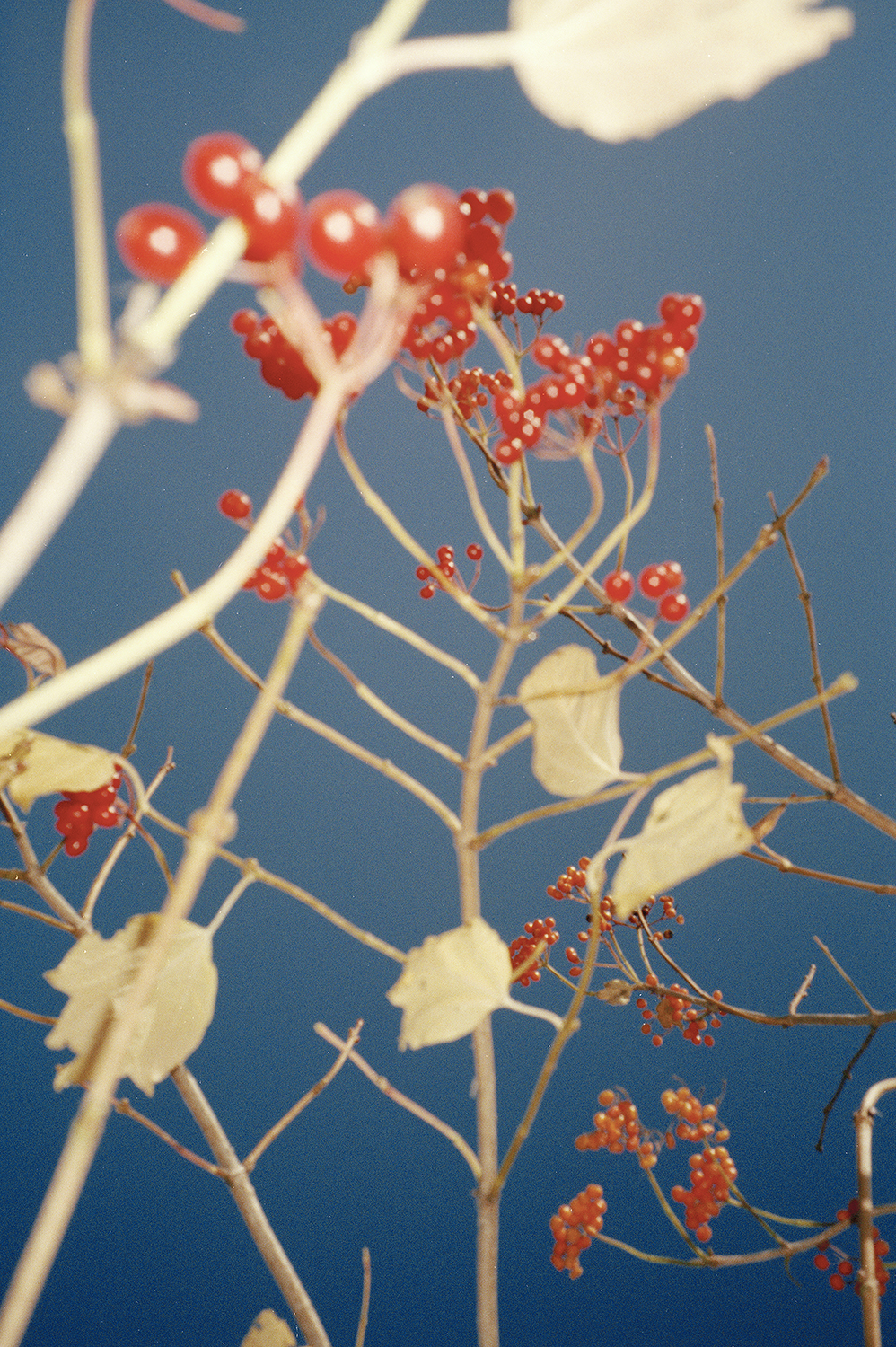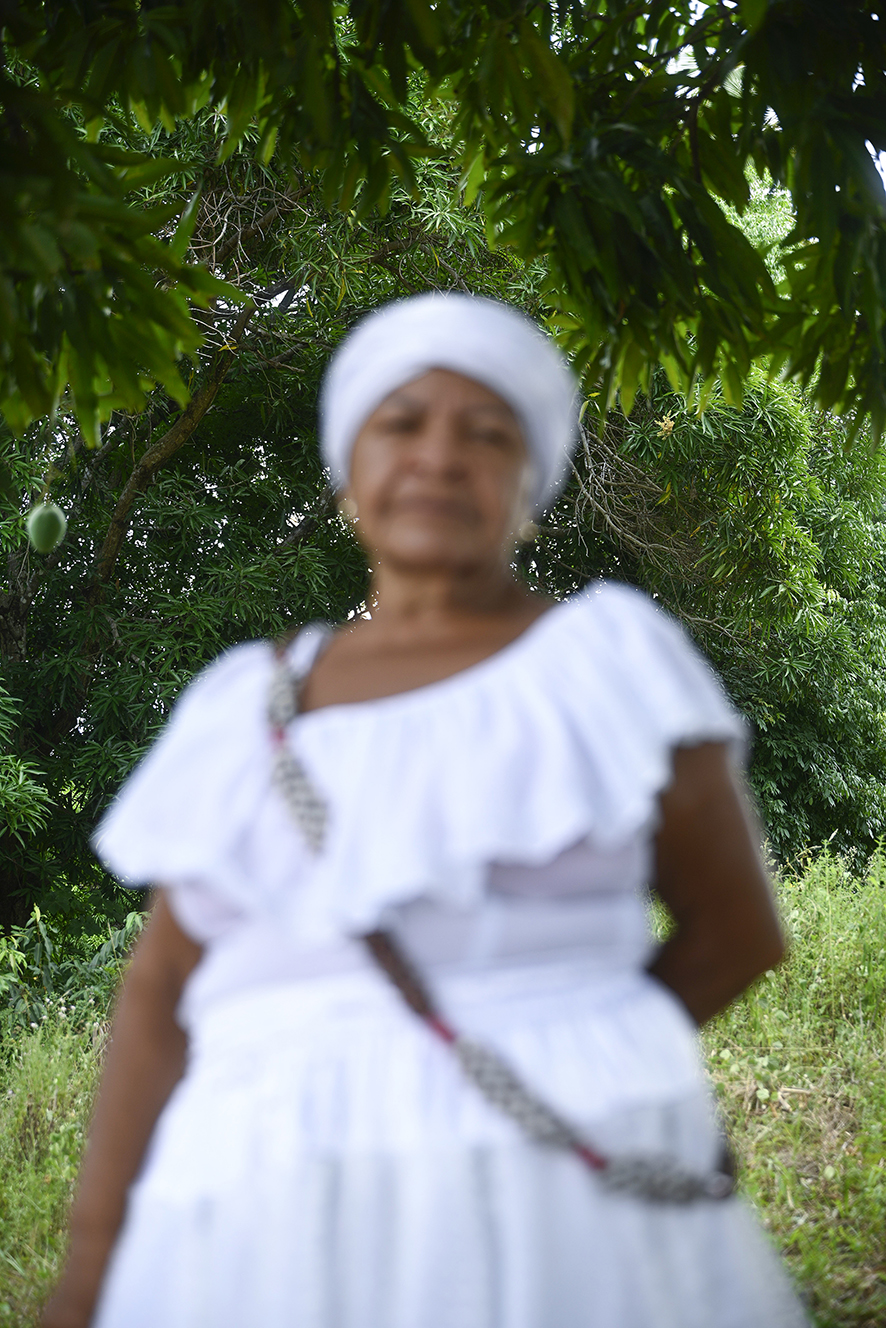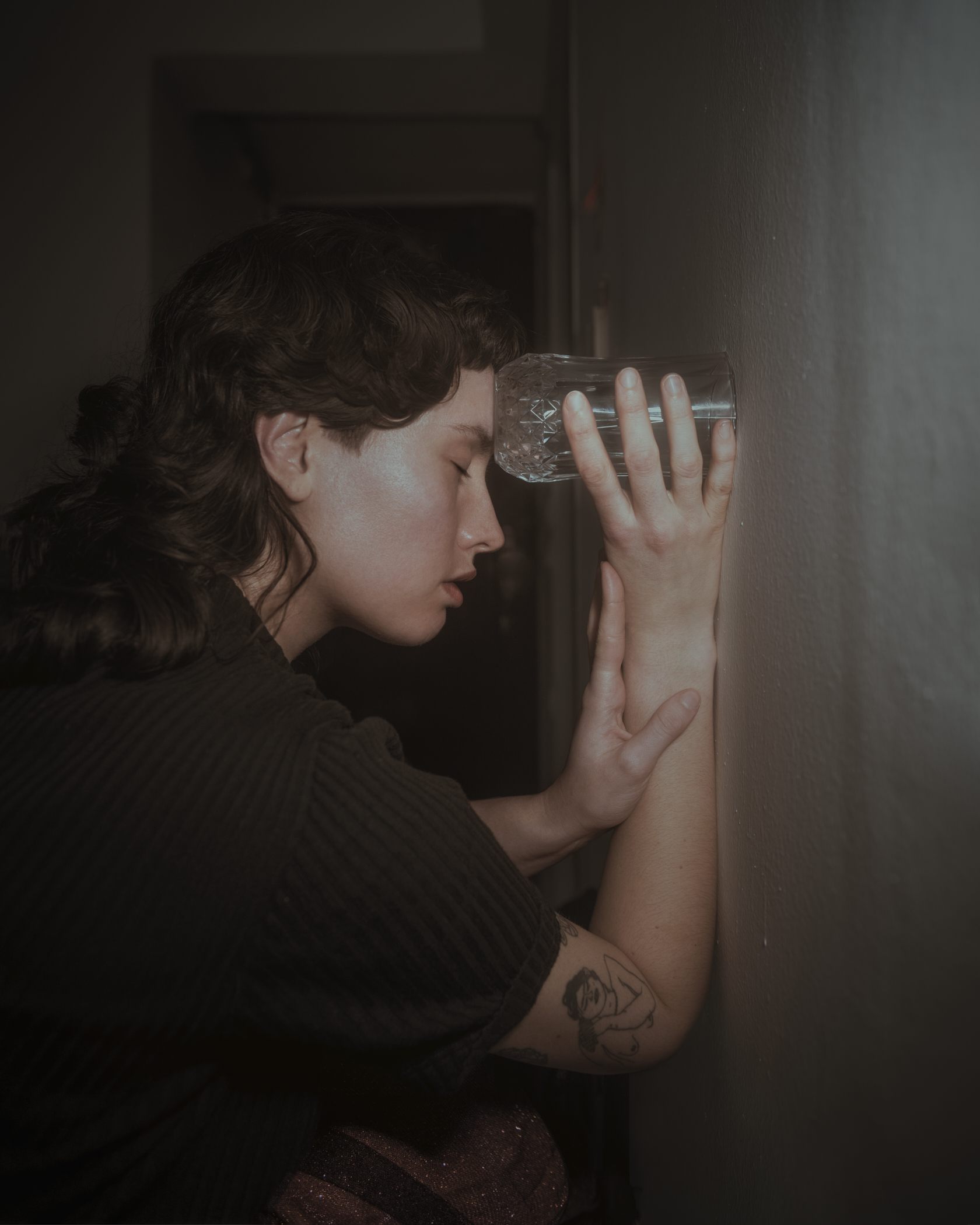Domestic Violence
Milena Soporowska
Nominated by
PHotoESPAÑA
.jpeg)
“(…) Shiny veneers, monumental couches, elegant cabinets, ornamental jardinières, padded sofas, soft cushions and patterned carpets protected from the feeling of disappointment and social and political instability. Symmetrically arranged furnishings and low-hanging paintings created an optical sensation of rounded and limited space. The room enclosed its resident absorbing all shocks and securing from injuries.In the second half of the 19th century, the bourgeois playroom is visited by some eccentric guests. The media starts to spit ectoplasm — viscous whitish substance called “body of ghosts” — and the round tables decorated with doilies or embroidered napkins become the means of communication with the intangible sphere. The mahogany or nut-tree table resting on a central solid leg fixed to a plinth does not only host social encounters. Such tables gave rest to townsmen and allowed them to sip tea, argue with revelers or listen to musicians; but they were also recommended to the beginning spiritualists. After the year 1848, the idealized chambers similar to those illustrated in furniture brochures become laboratories where science and occult came together (…)”.The project represents a further stage in my reflections on the relationship of the occult to the domestic environment and the bourgeoisie.(Excerpt from the text titled Domestic Violence published as a part of the catalogue of the Rooms exhibition curated by Frank Ammer during the 2019 Fotofestiwal in Łódź.)
The Artist

Milena Soporowska
Nominated in
2021
By
PHotoESPAÑA
Lives and Works in
Warsaw, Poland
Milena Soporowska is a visual artist based in Poland. Her work explores, among other things, the intertwining of everyday life with magic and the occult, questioning the concept of home as a safe, familiar haven. She is interested in the combination of alternative medicine and psychoanalysis, and the overlap between Christianity, esotericism and folk spirituality.She graduated in Art History, presenting her master's thesis on the influence of spiritualistic and mediumistic photography on art in the light of Freud's category of unheimlich. She also studied photography, museology and psychotronics. Moreover, Milena is a graduate of the Sputnik Photos mentoring programme.Read more
More projects by this artist
2023
Quarrelsome
Project carried out during Jastrzębska School of Documentary Photography concentrating on Upper Silesia region in Poland.
It is1736. Czeladź, a small city in upper Silesia, Poland, is flooded.
As a result of heavy rainfall, the Brynica River overflows, engulfing the fields and houses of the inhabitants. According to the legend, the water stops in front of the house of a rich “quarrelsome” widow, Katarzyna Włodyczkowa.
A few years later, the land mayor Bartłomiej Sojecki and the mayor Żądliński accuse the woman of witchcraft. As a result of a quickly prepared trial, she is sentenced to death. The land mayor court calls the hangman who beheads Włodeczkowa in the market square. The body is burned on Mount Borzesze, and the woman’s property is taken by her accusers.
Włodeczkowa’s sons appeal against the verdict, referring the case to the Prince Bishop. The Wiślica officjal sent to Czeladź questions the criminal proceedings, which turn out to be invalid without consulting the clerical court. Symbolic penalties are imposed on those involved in murder of Włodeczkowa. In the eyes of the law, the woman is rehabilitated but only in this regard. Among convicted for failing to help was Katarzyna’s relative, probably her brother. A few years later, he is elected mayor of Czeladź.
More than 250 years later, another mayor of the town orders a monument to commemorate Katarzyna Włodyczkowa, as well as to make a new touristic spot.
Jacek Kiciński designs the statue of a woman on broom. The figure is planned to be placed in front of the church, but the residents of Czeladź are dissatisfied. In consequence, it has been “hibernated" in the sculptor’s workshop for over 8 years. It was only in 2016 that the monument was ceremonially unveiled on the outskirts of the market square.
I’m coming to Czeladź to do a street survey. I ask one of the ladies what she thinks about this sculpture. “Go do something useful, girl,” I get the answer from her.
The history of the monument becomes a starting point for revising the presence of a witch in local and global history. I study her representations, examining old propaganda woodcuts and bizarre Halloween costumes, or elements from the so-called beauty industry, as well as AI-generated content based on text prompts referring to stereotypes of a witch. Masks, prostheses, artificial nails, imaginary souvenirs serve me as tools to navigate the transformations of a witch throughout the centuries.
2023
Trialed by water
As a child, I loved being in the water. My parents often took me to the seaside. Water has become a symbol of relaxation for me. During the most difficult period of the pandemic, I was drawn to the river, the lake. I always associate water with rest. With a warm bath after a long, tiring day. With cleansing.
Through water, as a symbol of purification in the Christian religion, witches were verified. This was a so-called water ordeal. The accused - bound, naked or in underwear - was thrown into the nearest water reservoir. Drowning was a proof of innocence, resurfacing resulted in torture and a trial that usually ended up at the stake.
The first water ordeals took place in ancient Mesopotamia. In medieval Europe, they were used in criminal and civil trials. This peculiar method based on ignorance of the physical laws, resurfaced in the early modern times during witch hunts. The church banned it at the beginning of the 13th century, but city courts often used it in witchcraft trials. It was mostly used before the trial even started, as a kind of hint for a judge.
Although many clergymen and jurists pointed out the fallibility and brutality of the water ordeal, for the average person, it was unequivocal evidence of guilt.
I’d like to get some of that water back. Maybe a little bit for myself, maybe a little bit for the defendants. Through a series of (al)chemical procedures involving photographic emulsion, wandering through images from childhood, tarot or art history, I return to its meditative properties.
*My reference for the project is Astrida Neimanis’ hydrofeminism and her concept of water as a reservoir of memory. In the vast water archives both histories - childhood memories and traumatic water ordeal - coexist. Water is just there.
** The term comes from the files of the trial of Dorota Piotrowa, known as the Kashubian, accused of practicing witchcraft. The woman was tested by water. Thrice bathed, three times she came to the surface. As a result, she was imprisoned and tortured, source: AP w Bydgoszczy, AmN, ref. no. 131. Protocols of trials conducted against witches before the jury court of Nowe, 1689-1747.
(The project was carried out as part of the activities of Hydroza - a collective of visual artists founded in 2023, focusing on the topic of ecology, gender and environmental justice.)
2020
Handmade Spiritismus
A hand signifies the causative powers. It is also involved in making contact – with people, with the environment. When we make something with our own hands, it always has an added value. In the tarot, the hands hold the four symbols of the elements that structure our reality.A spiritual séance begins with creating a circle by touching each other's hands.The casts of the spirits' hands created during the séances served as evidence, testimony to the presence of such spirits.According to chiromancy, our life is written on the palm of our hand.Finally, various rituals require manual actions. Thanks to the involvement of the body, abstract thought is combined with matter.During the pandemic, the hand became an ominous refrain – a source of infection, disease.From then on, I started thinking about it even more often.My aim was to document homemade “rituals” and at the same time to examine modern forms of DIY home esotericism. I wanted to document people's search for structure and meaning in astrology, tarot, spiritualism, numerology and runes. My starting point were the 19th century spiritualistic séances organised in private homes, without a clergyman as an official mediator.The contact-restricting pandemic inadvertently turned my attention to myself, inwards. I began to follow the subtle signs of esoteric interests that I have developed from my childhood years until now. My handmade spiritual knitting is created using materials from my childhood, an assortment of stationery and five-and-dime shops, nail art items, souvenirs. The project is a record of the beginning of this journey and at the same time a prelude to presenting the stories of others like me.
Similar projects by everyone else
Newsletter
.jpeg)
.jpeg)
.jpeg)
.jpeg)
.jpeg)
.jpeg)
.jpeg)
.jpeg)

.jpeg)
.jpeg)































